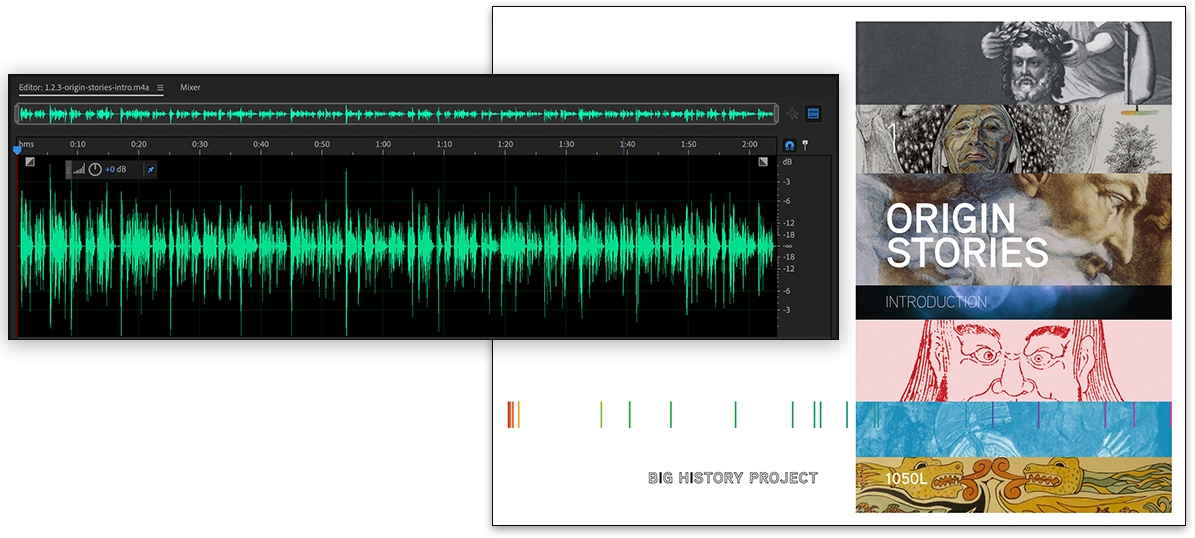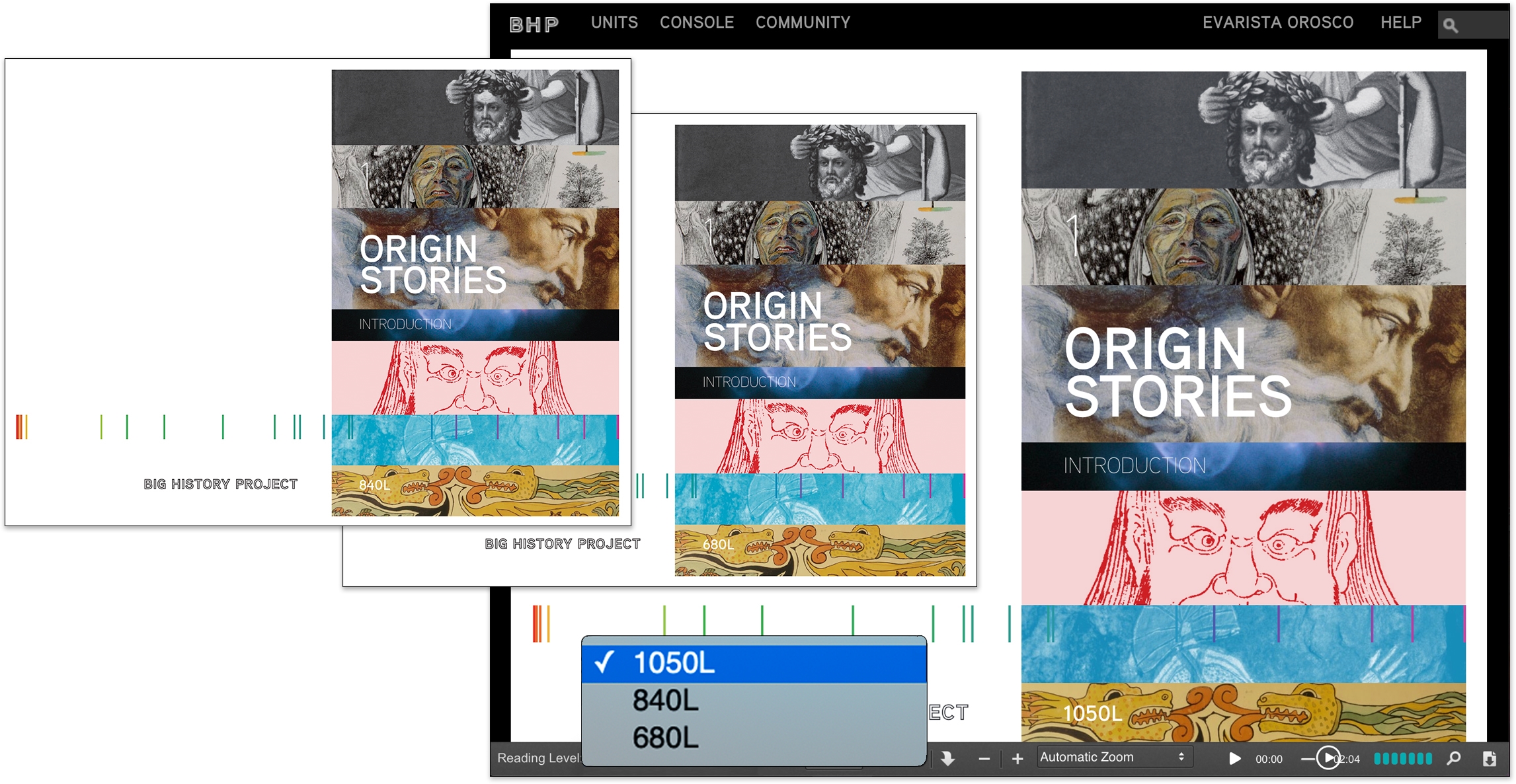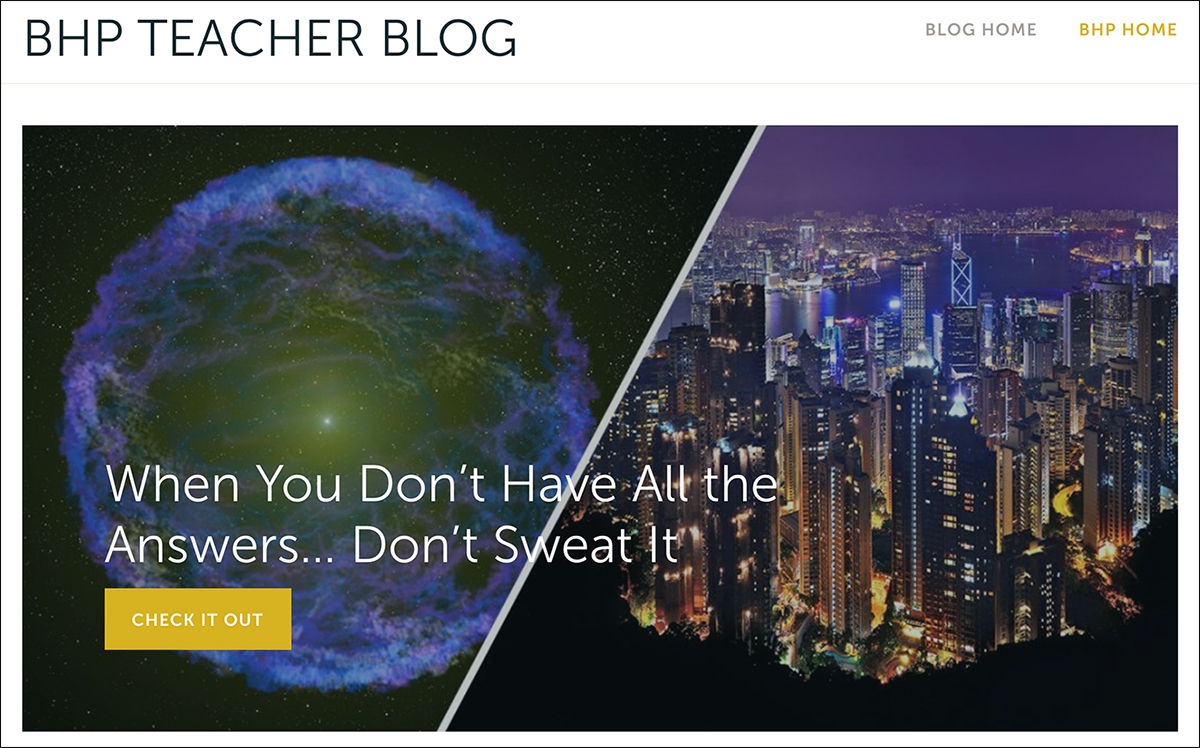It’s finally here. Two years in the making. From the folks who brought you the Big History Project, we are beyond excited to announce our next history curriculum – the World History Project. Our family has grown, and it’s a big enough deal that we’ve changed our name to OER Project. Together, the Big History Project and the World History Project show what free, online courses can be. See for yourself at NCSS 2019 in Austin, where we’ll formally introduce the OER Project to the world. We hope you can be there to check it out in person. But if your travels aren’t taking you to Texas in November, here’s the scoop.
Usable Histories
Seven years ago, the Big History Project raised the bar for Open Educational Resources (OER) – also known as free curriculum. BHP’s excellent articles, videos, infographics and activities did not arrive as a mountain of information to climb, but rather as a coherent narrative from the Big Bang to the present. The compelling and engaging content brings history to real life, providing students with a framework for history and a variety of other disciplines.
Moreover, BHP has a clear and consistent focus on student skills. With a series of classroom activities that introduce and reinforce a core set of skills, the course has a demonstrated impact on student learning. That learning is sustained well beyond the history classroom, empowering students in other courses. With its clear narrative and portable student skills, the Big History Project shows us what a usable history can be. The eternal question “When am I going to use this stuff?” is answered again and again.
Introducing the World History Project
The World History Project turns students into historians. Starting with evidence, students connect historical facts to understand the problems of today, and prepares them to solve the problems of tomorrow.
Narrative Power
We present history in a way that connects the dots – the people, places and events of history – into coherent narratives. Only then can we understand the trends and ideas that orient us to the present, and equip our students to meet the demands of the future. This is what makes a usable history. Bob Bain has been in the trenches developing this concept for years, and was integral in helping us implement and perfect the narrative in both Big History and World History Projects. Here’s his TED talk on why narrative matters so much to making history usable.
We’re More than a Course, We’re a Community
From the beginning of BHP, it has been the teachers who make the course so special. Our courses transform textbooks into a conversation among teachers, scholars and students. The online teacher community has been an invaluable resource to many. For those getting started, the community offers a wealth of insights and advice from experienced BHP educators about how to get the most out of the materials. For those who’ve taught it in the past, the community is a place to connect with other teachers and scholars to swap ideas and geek out on burning questions about the material in general, a particular classroom’s needs, or an interesting connection to today’s headlines. In addition, the OER Project has an active blog to bring these great ideas to the surface. For even more insight, check out our social media channels where we share articles and blog posts we think our teachers will find useful.

Skills, Skills, Skills
Like BHP, WHP focuses heavily on skills development. While the students learn a lot of content in the course, they need skills to put that information to work. With the World History Project, students will learn a clear progression of practices. Each practice carefully introduces the skill, then reinforces it over the year. The progressions turn these skills into habits that can help confront the big “what’s-it-all-mean?” questions asked throughout the course. Those habit-forming skills include:
- Reading
- Writing
- Contextualization
- Comparison
- Causation
- Continuity and change over time
- Sourcing
- Using narrative

Contemporary Content
For many students, history is a list of famous people, places and events that have little to do with their world today. It is a window into a past that has no relevance to their own issues, challenges or themselves. The World History Project’s window is also a mirror – it reflects the students back to themselves and their world. Using the power of narrative, WHP tells a story connecting the past to the present, and has everything to do with the future. As the patterns of history emerge, students recognize them in the enduring challenges of today. With a variety of voices from around the globe, the course encourages students to see the world through more than one lens, and even to see themselves in new ways.



Which Course Should I Teach?
Well, that’s really up to you, and how your goals intersect with the requirements of your school, your district, and your state. But here are some helpful suggestions:
If you teach middle school or want to lay a solid foundation for historical thinking in high school, then BHP is for you. With a clear and thoughtful set of scaffolds and practices, Big History Project is an outstanding foundation for further study. Thanks to article leveling and other flexible options, this course has been successful in classrooms ranging from sixth to twelfth grade.
If you teach high school World History, World History Project is better suited for you. Especially if you need to prepare your students for advanced or AP course work. Designed to build upon the Big History Project, but able to stand alone, the World History Project provides a comprehensive set of materials.
What Makes Big History Right for Middle School?
One word: scaffolds. Being an online course not limited by physical printing, we get to use cool stuff – like leveled readings. We’re also able to keep tweaking and perfecting practice progressions based on the data we gather from BHP classrooms. Plus, we can help kids build strong writing skills with amazing tools like immediate essay scoring. And now hear this: we just added audio versions of all readings. We updated the skill development activities so that the thinking skills students practice are now scaffolded as a progression throughout the course.
Finally, there have always been and we continue to add engaging, hands-on activities that allow kids to demonstrate what history and historical thinking is good for out in the wild. We’re perfectionists in an imperfect world, so we will continue learning from our classroom teachers and incorporating their best ideas and suggestions, as we make Big History the best damn history course for middle and high school students.

Click here to download the audio version of “Origin Stories Introduction.”

Click here to download “Origin Stories Introduction”: 1050L / 840L / 680L

Click here to visit the BHP Teacher Blog
Ok, so are you sufficiently excited and ready to check it out? Explore now at whp.oerproject.com . If you’re planning to attend NCSS 2019 in Austin, come see us, ask questions, and explore the course more at Booth #405.
 For full access to all OER Project resources AND our amazing teacher community,
For full access to all OER Project resources AND our amazing teacher community, 
